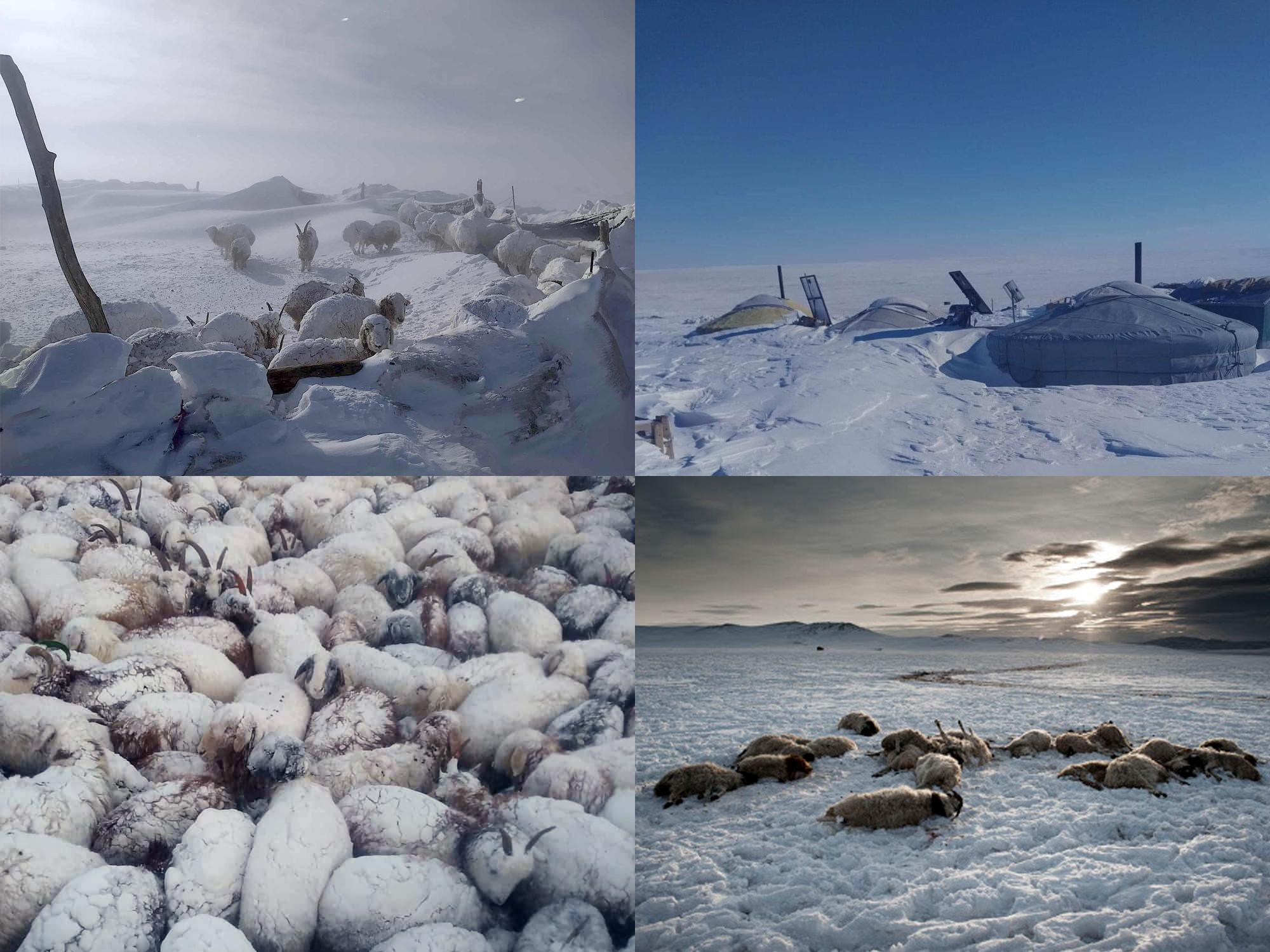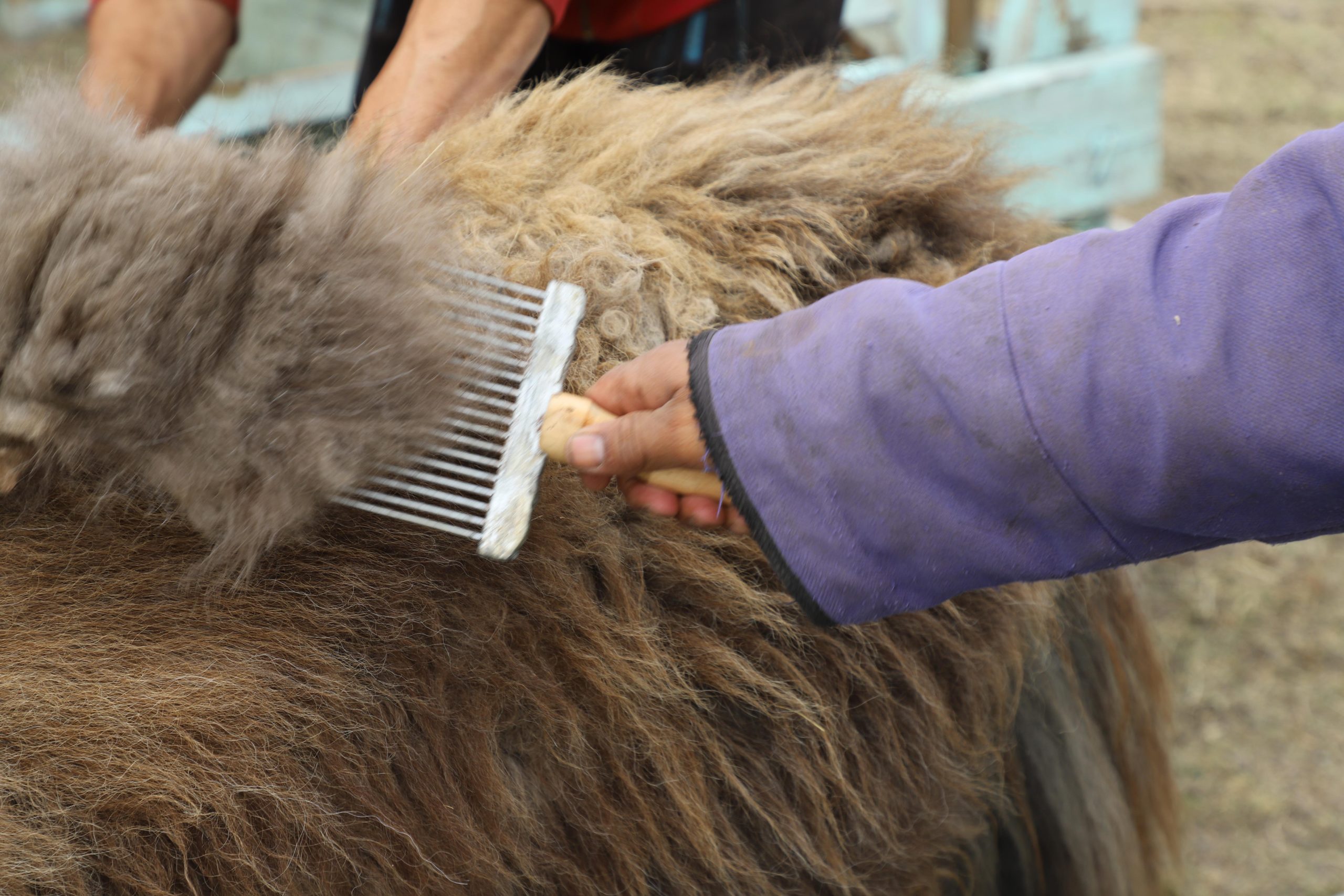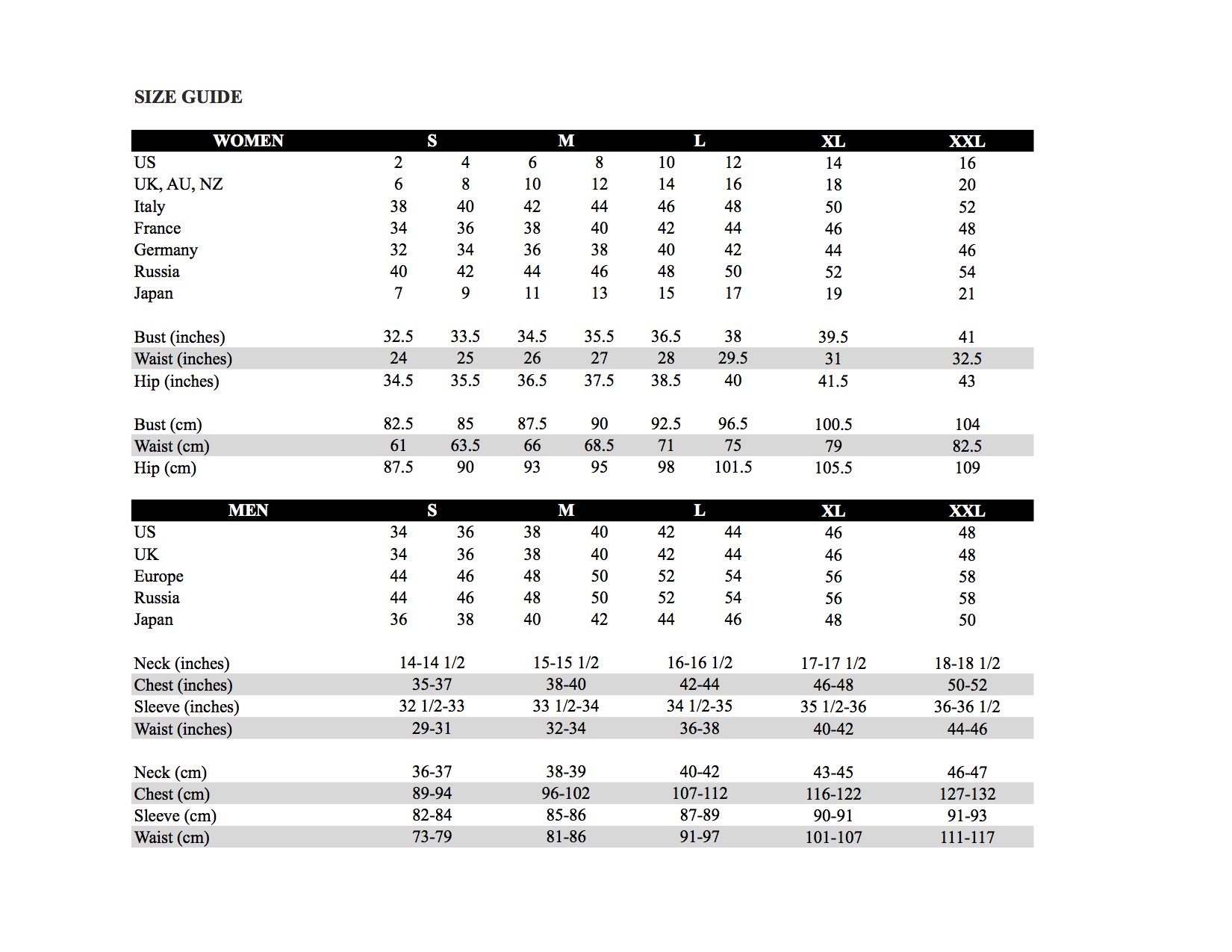DZUD harsh winter weather conditions.

Mongolia is highly vulnerable to severe winter conditions and cold wave, known locally as ‘dzud’. National authorities in Mongolia have issued warnings and forecasts for harsh winter conditions and severe cold wave.
A dzud is a slow-onset disaster, resulting in gradual livestock mortality over time due to a prolonged combination of malnutrition and cold stress. The winter of 2024 has been extremely harsh, with continued dzud conditions throughout the country.
As of 20 December 2023, the Government of Mongolia reports that approximately 90 per cent of Mongolia’s territory, including 21 provinces excluding Ulaanbaatar city, or 321 out of 339 soums are categorized as facing a high or extreme dzud risk. Moreover, 250 soums, excluding two districts of Ulaanbaatar city, covering 74 per cent of the nation, are already in dzud or near-dzud conditions. Within the dzud conditions, 47 soums in 14 provinces are under ice or icy conditions, while 135 soums in 17 provinces are under the white dzud conditions.
-43-48 degrees at night and -29-34 degrees during the day in the valleys of major rivers such as Uvs Lake, Darkhad , Zavkhan , Ider, Tes and Baidrag rivers.
This winter has seen more snow than in the last 49 years, more than the dry winter of 2009-2010, and more precipitation than since 1975. As of today, more than 115.956 herders impacted, leading to substantial livestock losses, 1.4 per cent of the total livestock in Mongolia.
The alarming rapid temperature fluctuations and heavy snowfall caused a big loss of livestock and severely impacted the live hood of Mongolian herder families. Although dzud occurrences are common in Mongolia, this year’s severity is concerning. The livelihoods of vulnerable herder households and their socio-economic situation are under threat. The worst is yet to come, the peak of livestock mortality will occur from February to April.

President of the Federal Republic of Germany Frank-Walter Steinmeier paid a State Visit to Mongolia on February 7-8, 2024, the visit was implemented within the framework of the 50th anniversary of the establishment of diplomatic relations between the two countries.
Amid the visit, Munkhbumuud LLC have had an honor to receive the visit from the President Frank-Walter Steinmeier, the First Lady Elke Budenberger, Minister of State Dr. Tobias Lindner and distinguished delegates.
Our company regards this visit as an honor, the founder of the company and family members exchanged their history on founding and establishing the knitting factory, shared the values, product features and export experience to the European market. The guests got to know the Know-how of our production, the characteristics of Premium quality Mongolian cashmere, its softness, the biodegradable and natural qualities.
We were humbled and deeply appreciate the importance of such a visit and grateful for the provided encouragements and suggestions.
캐시미어 섬유의 원산지는 대부분 몽골과 내몽고(중국)입니다.
많은 분들이 몽골산과 내몽고산의 다른 점을 인지하기 어렵습니다.
하지만 두 지역의 캐시미어는 확연한 차이점이 존재합니다.
내몽고에 비해 몽골은 영하 50도에서 영상 40도까지의 엄청난 기온차를 보이는데, 이러한 환경에서 자란 염소는 뛰어난 보온성을 지닌 긴 털을 가지게 됩니다.
따라서, 상대적으로 덜 추운 지역에서 성장하는 내몽고 염소는 털이 짧으며 보온성이 낮습니다. 또한, 소재의 촉감 역시 몽골산이 더 부드러워 세계적으로 No1.캐시미어로 인정받고 있습니다.
몽골산 캐시미어는 전세계에서 채집되는 캐시미어 중 가장 최고급 소재로 인정받고 있습니다. 타 지역 캐시미어에 비해, 털이 길고 부드러워 해외 명품 브랜드에서도 가장 많이 사용합니다.

- Water
Flicking or spraying a little water on the surface of your cashmere garment will help to get rid of static electricity instantly. Or simply getting your hands wet and brushing them over your cashmere clothes. The only con here is that while water neutralizes the static instantly, it can wear off quickly.
- A Metal (Hanger or any metal)
Glide a metal clothing hanger through the inside of the item – the metal discharges the electricity, thereby removing the static. If you do not have a metal hanger, you can also use another metal item or Safety pin. Hiding a metal safety pin into the inside seam or pocket of your cashmere garment. The metal prevents that static electricity. Just touch some sort of grounded metal, and the electricity will discharge leaving you static-free. Metal can attract and discharge the built-up static electricity, returning the object to its natural balanced state.
- Static Solution Spray
You can buy from stores specially manufactured spray for static removal.
- Homemade Static Guard
Mixing a cap of fabric softener with a full water of spray bottle and spraying will leave you static free and smelling fresh.
- Hairspray
Spray a light amount of hairspray onto your cashmere clothes before putting them on. This quick trick works like a charm to eliminate static.
- Air Dry your cashmere clothes
- Use A Humidifier in the room
Mongolian nomadic lifestyle inherited through centuries is a representation of unique coexistence of human, nature and herding. Nomads were able to survive and even thrive in one of the most hostile climates in the world. It is believed that every living thing in nature have spirits, so the domestic animals are treated with respect and care e.g. the down shearing process is not conducted by machine; instead herders use special scissors to avoid inflicting any injury on the herd.
Cashmere is the wool or fur of the Kashmir goat, which are primarily raised in Mongolia, but many are bred in Iran, Tibet, India and China. The colder the climate, the finer and warmer the undercoat, and the better the cashmere that comes from it. Cashmere naturally comes in white, beige, light grey and brown colors.
Yaks survive at altitudes sometimes exceeding 5000 meters in harsh highlands of Himalayan region, Tibetan Plateau and some areas of Mongolia and Central Asia. Yaks come in grey, light brown and dark brown colors. Properties of yak wool like breathability and static-resistance make it an ideal fiber for garments as well as home products.
1. It’s warm.
The warm quality of yak wool was first discovered in 1980, as it maintained the insulation even when the wool got wet, keeping normal body temperature. During the experiment, yaks kept the body temperature of +8 to +20 in -18oC, which explained yaks’ adaptation to the harsh climate, surviving extreme colds. This indicator is 10-15 percent greater than that of merino wool.
2. It’s soft.
It is difficult to distinguish scoured yak down from scoured goat cashmere, unless told so. The fiber is unbelievably delicate and thin despite the yak itself being huge. Munkh usually uses 17.5-19-micron fibers for manufacturing, which ensures the most favorable condition for the product to be soft, strong, and durable. That is the reason yak down makes a perfectly balanced product that is easy on the skin, yet keeps you warm during cold winter.
3. It is strong and durable.
Yak down has a greater sulfurous base and higher levels of protein and amino acid, making it stronger and more durable compared to other kinds of wool with the same diameter.
Properties of Yak Wool in Comparison to Cashmere and Camel Hairs. Journal of Natural Fibers. 15. 1-12. 10.1080/15440478.2016.1212762.
Liu, Chan & Xie, Chunping & Liu, Xinjin. (2017).
Recently, yak wool has got more and more attentions for its good quality and competitive price in textile industry. However, for its large dispersion and stiffness, there are still some difficulties in utilizing yak fibers, which also further limit the development of yak wool products. Aiming at this problem, in this article, yak wool was compared with cashmere and camel hair. Cashmere and camel hair are another two kinds of animal fibers, which have been studied for a long time and there have been mature manufacture techniques for some cashmere or camel hair products. By comparative analyzing the surface and cross-section morphologies, physical and chemical properties of these three kinds of fiber, the better ways to develop yak wool can be got. Findings show that among the three kinds of animal fibers, the scales of yak fibers arrange densest. Besides, it also has the highest strength and friction effect.
4. It’s breathable.
Breathability of yak down indicates its abilities to absorb and release moisture, adapting to one’s body temperature. One will forget the uncomfortable feelings of wearing clothes made of synthetic materials like sweating, after wearing” breathable” clothes made of yak down.
5. It is static-resistant.
All kinds of natural fibers have anti-static quality-they do not electrify. In terms of yak down, this indicator is quite high, even higher than cashmere. Therefore, clothes made of yak down do not stick to the body and neither electrify.
6. It’s anti-bacterial.
Yak down has a unique, anti-bacterial quality. It is impossible for bacteria to breed from sweat and dirt in clothes made of yak down. Even in situations where no cleaning and washing is available, you may not worry about the bacteria.
7. It does not absorb any odor.
Yak gives out almost no odor, despite its wild appearance. This natural characteristic forms another quality of a product made of yak down. Likewise, there is no need to wash yak products as much frequently as clothes made of other kinds of wool, resulting in longer durability.
Nomadic life has been central to traditional Mongolian culture throughout history. Even with recent changes brought about by urbanization, 35% of Mongolians are still living a nomadic life. These people depend on vast, open land for survival.
Pursuing a traditional way of life is becoming increasingly difficult. Most basically, the land itself is transforming. According to a survey done by the Mongolian government, around 850 lakes and 2,000 rivers and streams have dried up. A consequence of this loss of water is the desertification of the Mongolia countryside. As much as 25% of the country’s land has turned into desert over the past 30 years.
Further studies show that potentially 75% of Mongolian territory is at risk of desertification. These environmental changes directly threaten the Mongolian nomadic way of life, which has been passed down from generation to generation for thousands of years.
This project is an attempt to recreate the museum diorama. But instead of making these in a studio, with models, I used actual people and their livestock in a real place—the desertified lands in Mongolia. The concept is that these people have been forced to go into a museum diorama for survival. To create the idyllic backdrops, I printed images on a billboard and then placed the billboard in line with the actual landscape’s horizon.
By doing this, I hope to convey a sense that the lives of these nomadic people occurs between their (disappearing) reality and the virtual space of a museum. Indeed, in the future, I imagine that Mongolian nomadic life might only exist behind the velvet rope of an exhibition.
—Daesung Lee
From the series Futuristic Archaeology by Daesung Lee.
It has been a month since Munkh has participated in Maison & Objet in Paris, a biannual exhibition that determines the tendencies of home decoration and interior design of boutiques & hotels.
Despite the attacks in the city in November, this edition of exhibition has been successfully organized from January 22th to January 26th drawing 120,000 visitors from Europe, Americas and Asia, exceeding the stats of September, 2015.
Munkh Cashmere exhibited its collection of home products including home wears, throws, pillow covers, as well as small accessories for home stays. In the crowded halls of Parc Des Expositions (Paris Expo) in the heart of Europe, the visitors had mainly positive feedback on the products, wanting to own their piece of cashmere.
We will be looking forward to the next Maison & Objet fair, and we express our gratitude to all visitors for taking their time to visit us!
1.Collection of raw materials
Manufacturing technology of cashmere products should follow specific technological instructions and a scheme approved by standardization. Main raw materials of Munkh, such as goat cashmere, yak down, or camel wool is collected from herders or a local companionship and then prepared for classification.
2.Classification
The raw material is sorted into 20 different categories through visual and sensory examination under the daylight, in accordance with the quality and technological standards.
3.Sorting and scouring
Sorting and scouring to prepare the raw material for the next step, the dirt, manure, and wool-grease are separated from the classified raw material. It is essential to use environmentally friendly and harmless soap for this procedure.
4.Dehairing
After the dirt and bristles are removed from the scoured wool or cashmere, it becomes a dehaired semi-manufactured product.
5.Dyeing and mixing
Special dyeing technology is used for dyeing cashmere or wool, which is conducted in a low temperature in an open air. It is crucial to use the dyeing technology that damages surface of the raw material the less, is ecologically friendly and creates soft and feeling on the skin.
6.Spinning
The most important procedure of wool or cashmere manufacturing is spinning a yarn. The quality of a final product fully depends on the quality of the yarn. The technology consists of 5 phases, namely combing, spinning, braiding, double braiding, and twisting.
7.Knittings
Computer-controlled, fully automated machine is programmed for the design of the chosen product, and the details are knit together because of 1 to 3 phases. Knit details are threaded on machines of 5 to 20 gauges, making it a semi-manufactured product. Depending on the complexity of the design, a unit of product goes through up to 14 procedures. Munkh produces single jersey, cable, ajour, tuck, garter, and jacquard stitches & patterns on a 16-gauge automated knitting machine for thin, detailed knits; a 12-gauge machine for regular knits, and a 7, 5, 3-gauge machine for thick knits.
8.Completing the knitting process (Washing, Hand sewing, Ironing)
A final process that includes washing, drying, and ironing is conducted next on a sewn semi-manufactured product, followed by labeling and packaging. Munkh carries out 15 to 30 different types of detailed procedures on each product that contribute to its durability, reduces expansibility & shrinkage and the roughness of a wool or cashmere product.
9.Quality inspection
Quality is the main indicator of successfully supplying products to the market and introducing the value of wool and cashmere products. Munkh conducts two rows of quality inspection, working on constant improvement of the quality management & control system to achieve the level specified in technical documentation of standards and normative.

